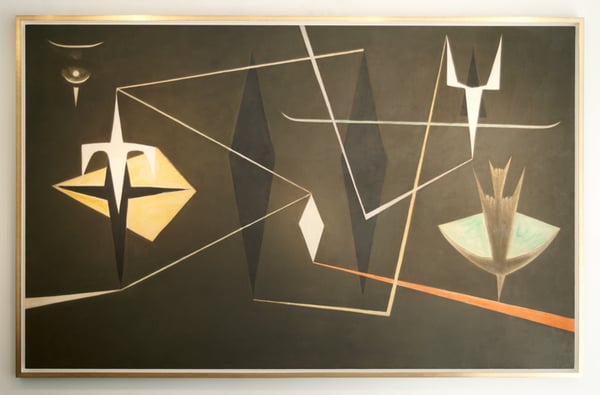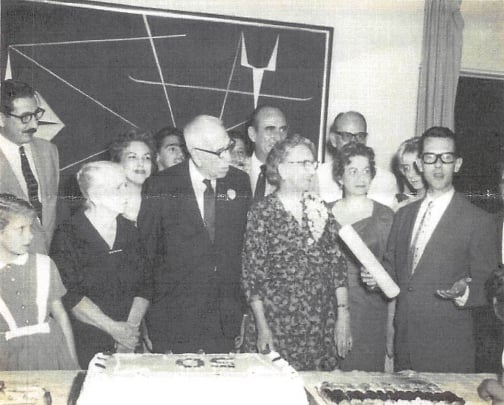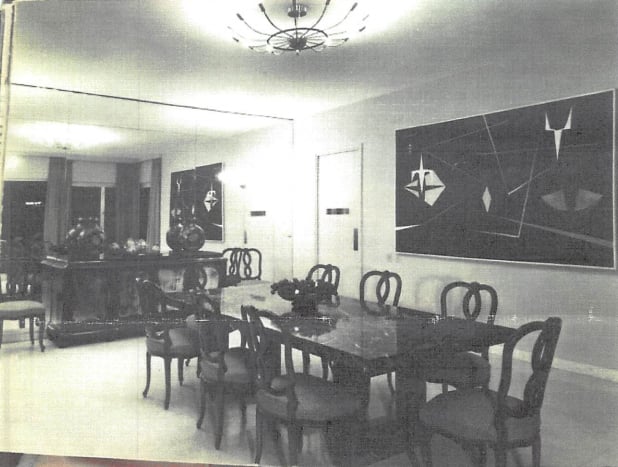Law & Politics
Settlement Reached Over Wifredo Lam Painting Lost During Cuban Revolution
The painting could be worth over $2 million, and is now for sale.

The painting could be worth over $2 million, and is now for sale.

Sarah Cascone

A repatriation dispute over a Cuban painting by Wifredo Lam allegedly seized by the Fidel Castro regime was settled out of court this summer, reports the Art Newspaper.
Cernuda Arte, a Miami gallery that specializes in Cuban art, attempted to sell the large canvas, a 1955 work called Sin Titulo (Suenos Arcabes), at Art Miami in 2015. When the dealer Ramón Cernuda placed a full-page ad about the work in the Miami Herald ahead of the fair, however, Lourdes Gutierrez, Rene Diaz de Villegas, and Lydia Hoyo noticed it immediately; their parents owned the artwork before fleeing Cuba in 1960 following the revolution.
“The painting was stolen from the family by the Cuban government,” wrote their lawyer, Joseph P. Klock of Rasco Klock, in a letter to the gallery in December 2015. He claimed that the family had been searching for the painting, which was registered as stolen property with the International Art Loss Register, for years, and attached photographs of the work hanging above the family’s dining room table in Cuba back in 1959.

Wifredo Lam, Sin Titulo (Suenos Arcabes), 1955, on display at the home of the Diaz de Villegas family in 1959. Courtesy of court filing.
Spanish collector Fernando Ruiz Pinilla, the current owner of the painting, had a different understanding of the work’s history. His lawyers argued that before emigrating to the US, the Diaz de Villegas family donated the work to the Franciscan monastery of San Antonio de Padua in Havana, where it remained until 1996, when it was sold and subsequently acquired by Ruiz Pinilla.
“The exact date of the donation is unknown because the original books and records of the Monastery were destroyed upon Fidel Castro declaring the Cuban Revolution communist and expelling eighty of the one hundred and four San Antonio de Padua priests and abbots in the early 1960s,” claimed Ruiz Pinilla in a complaint filed in the Southern District of Florida on December 23, 2015, in response to the Diaz de Villegas family’s efforts to reclaim the work.
The family contested this account in their counter suit for restitution, stating that “it is a mockery for plaintiff to suggest that Cubans who ‘left’ Cuba—due to political instability—and believed would be back in short order, had the time and foresight to ‘gift’ their belongings to the monastery.”
The two parties reach a confidential settlement in August 2016, with Ruiz Pinilla agreeing to pay the Diaz de Villegas family a mutually-agreed upon amount.

Wifredo Lam, Sin Titulo (Suenos Arcabes), 1955, on display at the home of the Diaz de Villegas family. Courtesy of court filing.
“The painting is currently for sale,” Cernuda confirmed in a phone call to artnet News. He was unable to disclose the price, but TAN pegs the work at over $2 million.
While he could not comment on the Lam settlement, Cernuda did note that the case was unusual. “In my 40 years dealing of Cuban art,” he said, this was only the second time he had encountered Cubans in exile seeking the restitution of artwork by a national artist, because “the collecting class of pre-revolutionary Cuban society mostly cared for European art.”
While the authenticity of Sin Titulo (Suenos Arcabes) was never in question, that is often not the case for paintings by Lam. According to TAN, the artist’s son, Eskil Lam, believes that there is a constant stream of forged Lam paintings coming from Cuba, and “anyone considering a work by Wifredo Lam with provenance from Cuba should be extremely wary.”
Cernuda acknowledged that there is reason to beware of forgeries of Cuban art, especially from the 20th century modernist movement. “Collectors would do well to make sure they deal with reputable institutions recognized for their expertise,” he said, adding that “in the specific case of Wifredo Lam, they should deal only with works that have been certified by the Lam foundation.”